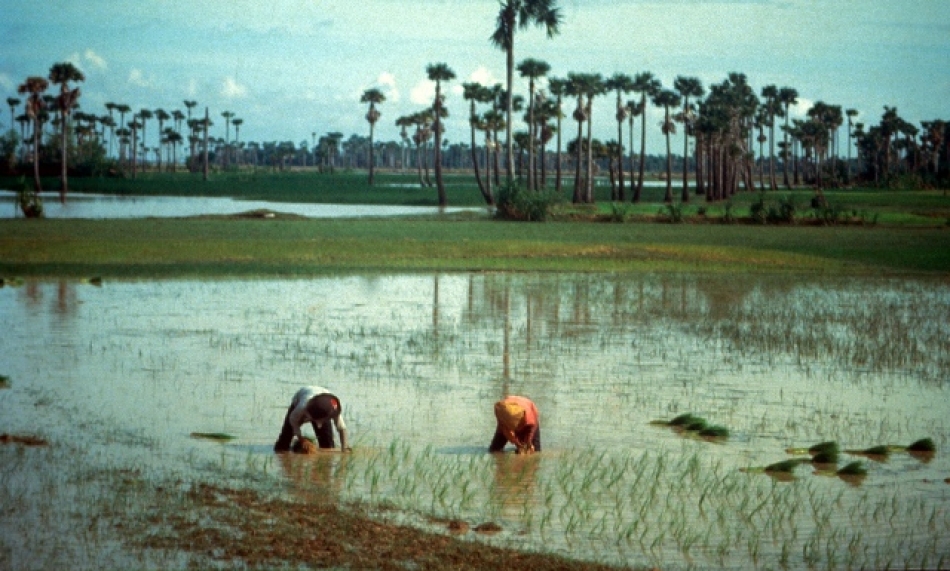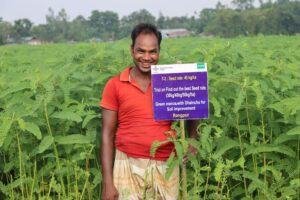
In 1961, a French Jesuit missionary, Henri de Laulanié, began trying to help farmers in the highlands of Madagascar to increase their production of rice and other crops. By 1983, he had come up with a rice-growing methodology that ultimately became known as SRI. Finally, in 1993, 2 years before his death, he published his results in the journal Tropicultura, which brought together three principles that define SRI: planting young seedlings, planting single seedlings, and applying minimal irrigation water to keep the soil just at or below saturation. These basic elements are complemented by “general principles of improved rice cultivation.”
Shifting SRI
SRI has since spread outside of Madagascar and evolved into a suite of flexible principles that can be adapted to local conditions. The SRI International Network and Resources Center lists the following SRI practices: very young rice seedlings (8–12 days old) need to be carefully and quickly transplanted in single plants/hill, and widely spaced in a square grid pattern of 25 × 25 cm or more; soil must be kept moist but well drained with good structure and organic matter; soil nutrients must be augmented, preferably with compost; and early weeding must be regularly done either mechanically or manually, through which weeds are incorporated into the soil.
However, in some places, different sets of shifting practices are being recommended and still billed as SRI. For example, transplanting older seedlings or transplanting more than one seedling per hill is considered to be SRI if site-specific conditions call for it.
In Cambodia, farmers using so-called SRI transplant 25-day-old seedlings, sometimes with more than one seedling per hill, and not always in square patterns. Although compost or manure is preferred, chemical fertilizers are not excluded and their use is even encouraged by some SRI practitioners such as those in the Indian state of Tamil Nadu.
Assessing SRI
The “relaxation” of the original SRI principles, the flexible inclusion of new components, and the integration of other improved management practices have made comparisons between SRI and non-SRI approaches difficult. This makes controlled experimental assessment of the benefits of SRI and evaluation of the gains that SRI practitioners might realize highly ambiguous.
When observing farmers using SRI in the field, the categorical clarity of SRI (as defined by de Laulanié) disappears and the boundary with other best management practices begins to dissolve. A 2010 review of adoption studies of SRI concluded that “Field observations and discussions with farmers very quickly confirm that the label ‘SRI’ encompasses a range of different implementations that depend heavily on the contingencies of farmers’ attitudes, household capacities, socioeconomic contexts, and local institutional factors, as well as agroecological constraints.”
SRI as a learning alliance
Some see SRI alternatively as a “movement” or a “learning alliance” to improve the livelihood of rice farmers by increasing yield and resource-use efficiency. This alliance is bringing together farmers, extension and development agents, and scientists to jointly adapt, integrate, and test improved rice management technologies.
Following in de Laulanié’s footsteps, farmers are encouraged to experiment in their own fields to find the best practices that suit their own conditions. They may start with the three original fundamental elements but may ultimately end up with a set of practices that are considerably different.
If one can offer farmers a menu of practices that are science-based and have a solid track record of performance and that can be tested, adapted, and integrated by farmers locally, then one can greatly improve farmers’ production systems. New tools, such as IRRI’s leaf color chart, and other new technologies (varieties, natural resource management options, etc.) being developed by researchers in the Global Rice Science Partnership (GRiSP) can be easily linked to the SRI movement.
_________________________________________
Dr. Bouman became the new director of GRiSP on 1 September 2012. For more on SRI along with access to a detailed SRI report, What is the System of Rice Intensification (SRI) and where is it going?, by Dr. Bouman, go to http:// snipurl.com/irri-sri.









